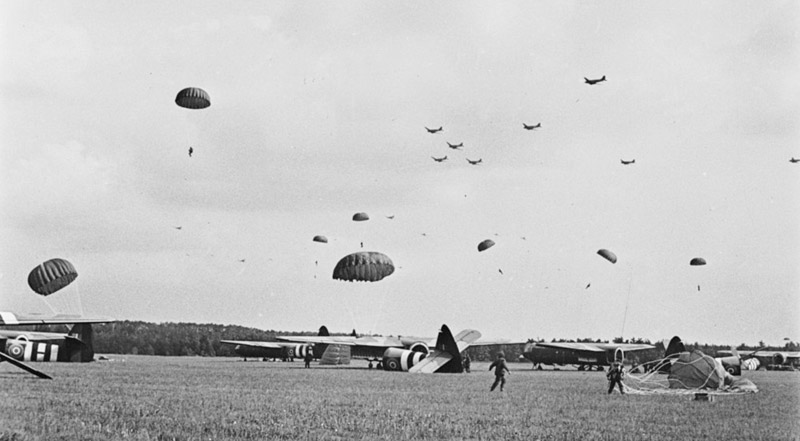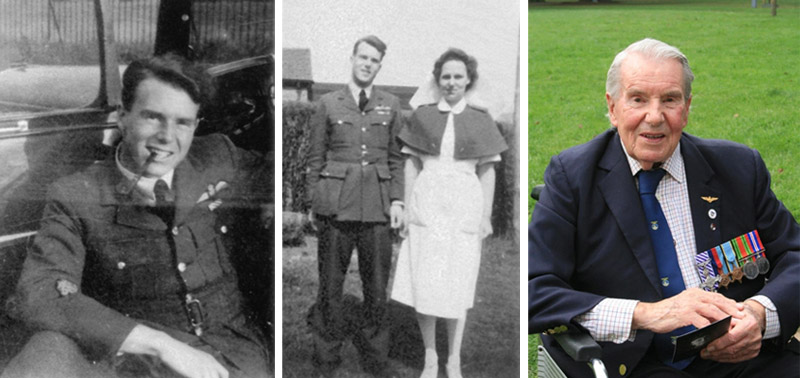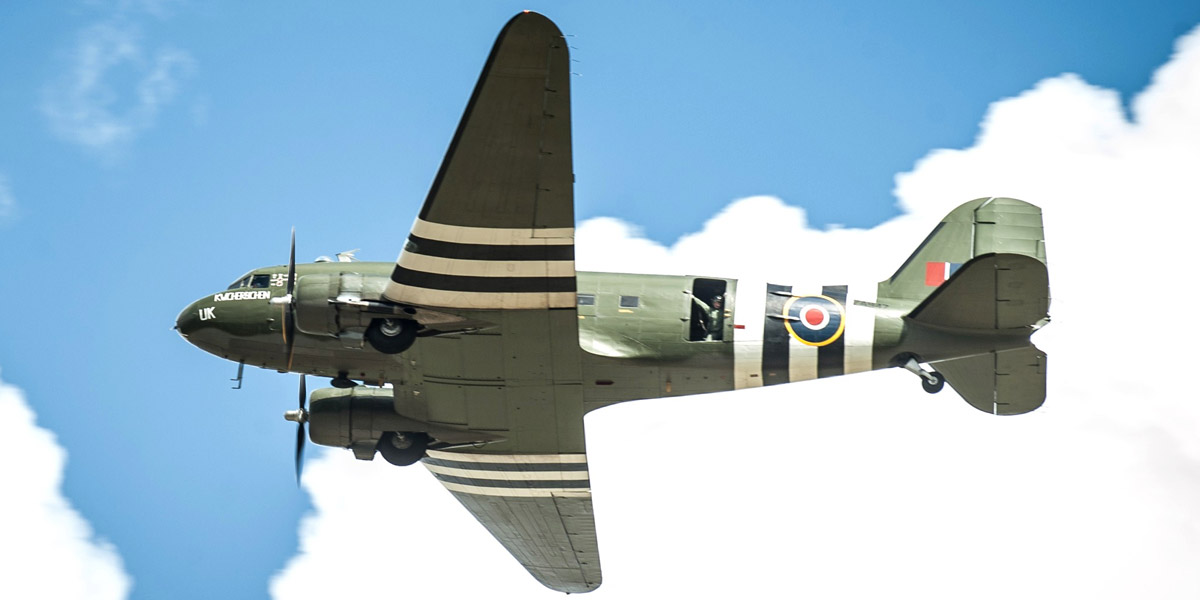Ken Cranefield - 233 Squadron Dakota pilot
RAF BBMF C-47 Dakota ZA947 is currently painted to represent 233 Squadron Dakota FZ692 ‘Kwicherbichen’ in commemoration of the men and women who operated these tough load carriers in support of the D-Day invasion and the Allied advance towards Germany.
One of those surviving heroes, Warrant Officer Knivett (always known as ‘Ken’) Cranefield DFC, recently passed away at the age of 94.
Ken Cranefield was born in Ealing in May 1922. He enlisted in the RAF in February 1941 and trained as a pilot in the USA. After completing his training on Vickers Wellingtons in the UK, he ferried one of the twin-engine bombers to North Africa, being intercepted en route by three long-range Luftwaffe fighters, which fortunately he managed to evade.
His return to Britain coincided with the build-up of the RAF’s transport force in preparation for D-Day and he converted to the C-47 Dakota and joined 233 Squadron, based at Blakehill Farm, near Swindon. He flew on the dangerous missions supporting the invasion of Normandy on 5th/6th June 1944, and in the period following the D-Day landings made numerous flights transporting military supplies and men into the Advanced Landing Grounds hastily constructed in France. On the return flights the Dakotas evacuated wounded soldiers back to hospitals in England. As the Allied armies advanced east, the Dakotas landed at recently captured Luftwaffe airfields.
Operation Market Garden – the famous Airborne operation to capture a series of bridges in the Netherlands, including the bridge at Arnhem – began on 17th September 1944. Warrant Officer Cranefield was the captain of one of 22 Dakotas of 233 Squadron that towed Horsa gliders, carrying soldiers, to Arnhem. All but one of the gliders arrived safely on Landing Zone ‘S’.

As the situation at Arnhem deteriorated, the re-supply of the 1st Airborne Division’s beleaguered positions became critical. On the morning of 23rd September, 233 Squadron was tasked with dropping more supplies into the heavily defended area with 17 Dakotas. Cranefield was the captain of one of them. Approaching the drop zone (‘DZ’), the Dakotas met with heavy anti-aircraft fire. Ken later recalled that it “sounded like peanuts raking the length of the fuselage”.

Centre: Ken Cranefield with his wife Marjorie, a nurse who he met whilst in hospital.
Right: Ken in later life.
His aircraft was struck by a high explosive shell which made a large hole in the starboard wing, setting it on fire, and tearing away part of the aileron. Although the Dakota was difficult to control he continued towards the ‘DZ’. The ‘Dak’ was hit again and Cranefield was badly wounded in the knee and thigh. Refusing treatment he remained at the controls until the panniers were dropped successfully. Only then did he allow the co-pilot, Flight Sergeant Stapleford RNZAF, to take control and fly the aircraft back to base. Cranefield’s wounds were tended by a crew member who used a length of microphone flex as a tourniquet to stem the blood loss.
Ken remained in hospital for many weeks; his wounds so serious that he was unable to return to flying duties. In fact he received treatment for the next 10 years. Whilst in hospital he met an RAF nursing sister, Marjorie, who he married in 1945. Marjorie died in July this year.
He was awarded the Distinguished Flying Cross (DFC) for his actions, the citation stating that he “proved himself to be a courageous and resolute captain, setting a very fine example”. He left the RAF in 1946 and took up a career in the Civil Service, rising to fill senior appointments in the Department of Employment. Ken Cranefield died on 17th September 2016, the anniversary of his first sortie over Arnhem.
These are the heroes that the BBMF commemorates. Lest we forget.







